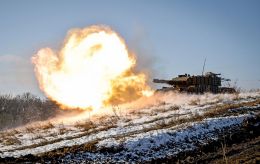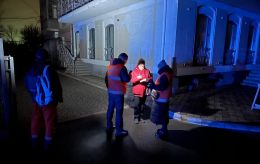Ukraine on the defensive: Standstill on the frontline and what's necessary for breakthrough
 Ukrainian military in positions near the occupied Kreminna (Photo: Getty Images)
Ukrainian military in positions near the occupied Kreminna (Photo: Getty Images)
The situation on the front, the reasons for the transition of the war to a positional phase, what the Defense Forces need for a breakthrough, and when it might happen are analyzed in the overview by RBC-Ukraine.
To prepare the material, statements by military spokespersons, an analysis by the Ukrainian DeepState project, an essay by the commander-in-chief of the Armed Forces of Ukraine, Valerii Zaluzhnyi, for The Economist, his article for CNN, an article by an American expert Michael Kofman, and comments by experts Oleksandr Kovalenko and Vladyslav Seleznov were used.
Strategic defense and positional warfare. What's happening on the front
January passed under the sign of Russia's offensive campaign, which began last fall. Russia gained the initiative almost across the entire front, and Ukrainian forces transitioned into strategic defense.
An advance is underway on Kupiansk from several directions. For several months, the enemy unsuccessfully attacks Synkivka, covering the city from the north. Capturing the village would allow the Russians to reach the outskirts of Kupiansk, while Ukrainian defenders repel assaults. Problems have arisen 20 km to the southeast, where occupiers captured the village of Krokhmalne and are attempting to expand their success near Tabaivka. Tabaivka itself remains a gray zone.
For more details on the situation in this area, read the article Russian troops advancing. What is happening near Kupiansk and is there threat to Kharkiv.
Positional battles are ongoing toward Lyman, both to the west and south of Kreminna, in the areas of Terniv, Yampolivka, Serebrianske Forestry, and Dibrova. The front has become active toward Siversk, where the enemy launches assaults supported by artillery and mortars, increasing the use of aviation and kamikaze drones. North and west of Bakhmut, the enemy attempts to break through the defense and advance toward Chasiv Yar; to the south, they seek to regain control over Klishchiivka and Andriivka.
"Due to the absence of tactical success on certain fronts, the enemy has temporarily shifted to defensive actions, keeping assault groups ready for offensive operations," said Oleksandr Syrskii, Commander of the Army of the Armed Forces of Ukraine and the Khortytsia group.
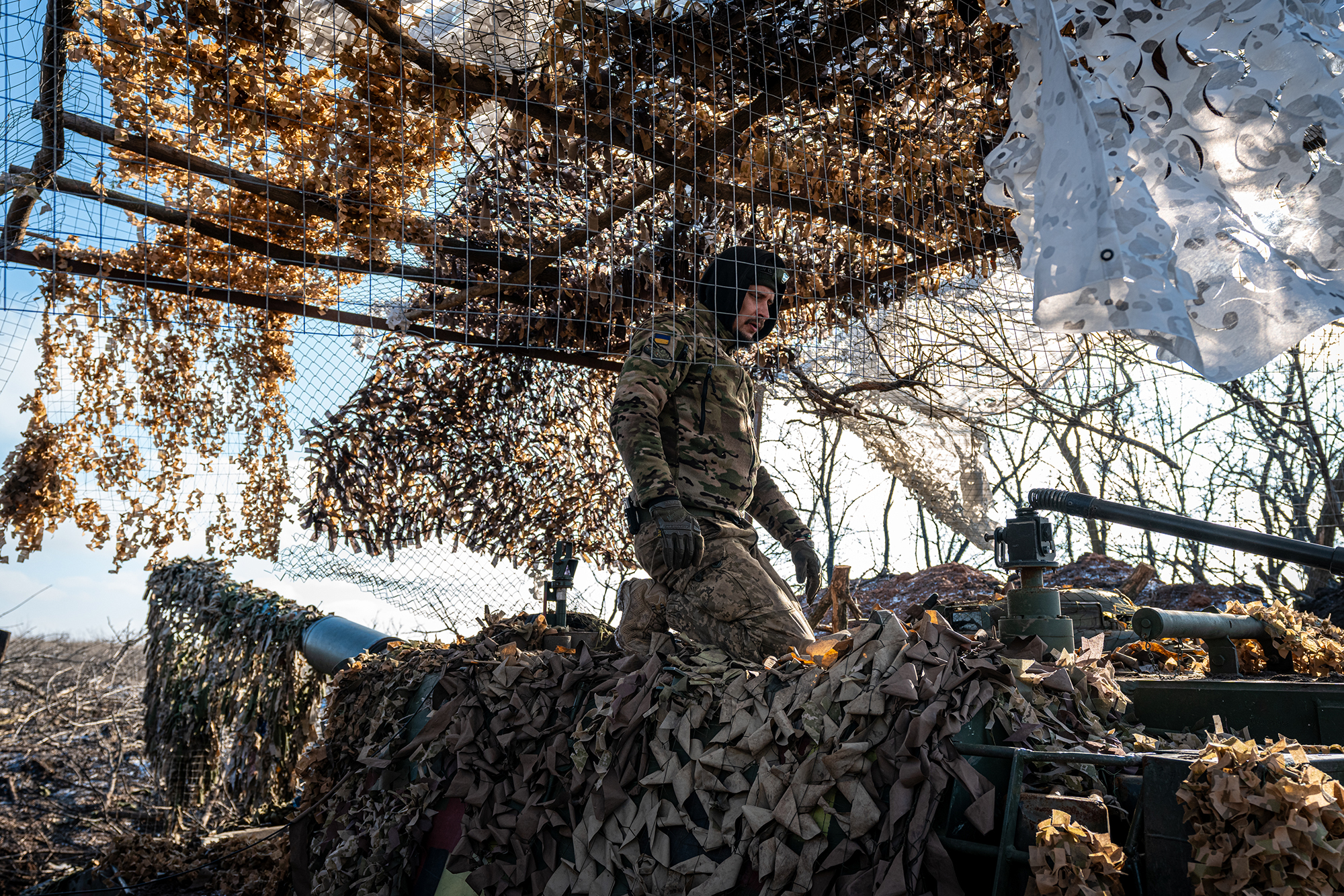 Ukrainian military near Bakhmut is holding back the enemy (Photo: Getty Images)
Ukrainian military near Bakhmut is holding back the enemy (Photo: Getty Images)
The main goal in the east remains Avdiivka. Its capture would push the front 10-15 km away from the occupied Donetsk. In the north, the Russians are restrained by the local coke plant, transformed into a fortress. The southern part of the city is more challenging. A video surfaced online showing how occupiers entered the rear through an old underground pipe, attacked the fortified area at the hotel-restaurant complex Tsarska Okhota, and attempted street battles. The head of the military administration, Vitalii Barabash, assured that they were repelled from their positions.
After the near-complete capture of Maryinka, the Russians intensified their activities to the south of the village of Novomykhailivka. Presumably, control over it is necessary for an advance toward Vuhledar. Positional battles are taking place southeast of Velyka Novosilka and in the Zaporizhzhia region near Robotyne and Verbove. The situation differs somewhat in the left-bank part of the Kherson region. According to Natalia Humeniuk, Head of the United Coordinating Press Center of Security and Defense Forces of the South of Ukraine, Ukrainian troops managed to expand footholds here.
Expert and former spokesperson for the General Staff, Vladyslav Seleznov, says that three months ago, the commander-in-chief of the Armed Forces of Ukraine, Valerii Zaluzhnyi, warned about the transition of the war to a positional phase.
"In fact, it turned out that way. The Russians have seized the initiative everywhere, and the Defense Forces are forced to react," he noted in a comment to RBC-Ukraine.
Currently, positional warfare is taking place in several areas. For example, in the direction of Chasiv Yar, where Ukrainian forces have dug in, neither the enemy can advance nor can the Ukrainian Armed Forces push it back toward Bakhmut. Looking at the overall situation, the Ukrainian army is in a strategic defense consisting of various tactical elements.
Military-political expert of the Information Resistance Group, Oleksandr Kovalenko, sees signs of classical trench warfare in the areas of Robotyne, Verbove, and Novoprokopivka.
"If we talk about the Lyman-Kupiansk axis, there we are exclusively in defense. Near Avdiivka, the Russians are advancing, perhaps the process of street fighting is starting there, which is not a sign of trench warfare. On the left bank of the Dnipro River in the Kherson region, it's a unique case because the foothold is expanding. So here, too, we can't speak of positional battles," he emphasized.
It should be noted that in positional warfare, combat actions are mainly carried out on continuous, relatively stable fronts with deep-layered defense. The biggest risk is that it can drag on and exhaust Ukraine.
Reasons for transition to defense and why the front is relatively static
The reasons for the transition to the current form of military action were listed by Zaluzhnyi in the essay for The Economist. The first is related to the lack of air superiority. Our army entered the war with 120 aircraft (40 technically serviceable) and 33 anti-aircraft missile divisions (18 fully operational). The support from partners strengthened aviation and air defense, and the opponent could not convert its quantitative and qualitative advantage into air dominance. Now, UAVs come to the forefront, partially taking over tasks of reconnaissance and air strikes.
The second reason is mine-explosive obstacles. In particularly important areas, Russian minefields have a high density and reach depths of 15-20 km. The Ukrainian side applies this approach no less effectively, so offensive actions are accompanied by significant losses in equipment and personnel. The third is counter-battery warfare. Western missile and artillery weapons provided an advantage to the Ukrainian Armed Forces initially, but later, the enemy learned to jam guidance systems, leading to a loss of precision of munitions.
The fourth reason is reserves. Russia has almost three times the human resources and has been continuing mobilization since the fall of 2022. However, it cannot achieve an advantage in the number of deployed groups, as it does not risk conducting a general mobilization before the elections in March. On the Ukrainian side, there is limited capacity to prepare reserves on its territory, and the prolonged war reduces the motivation of Ukrainians to fight. The fifth reason is electronic warfare. Russia updated almost its entire fleet of equipment before the invasion, and now Ukraine is trying to catch up with it.
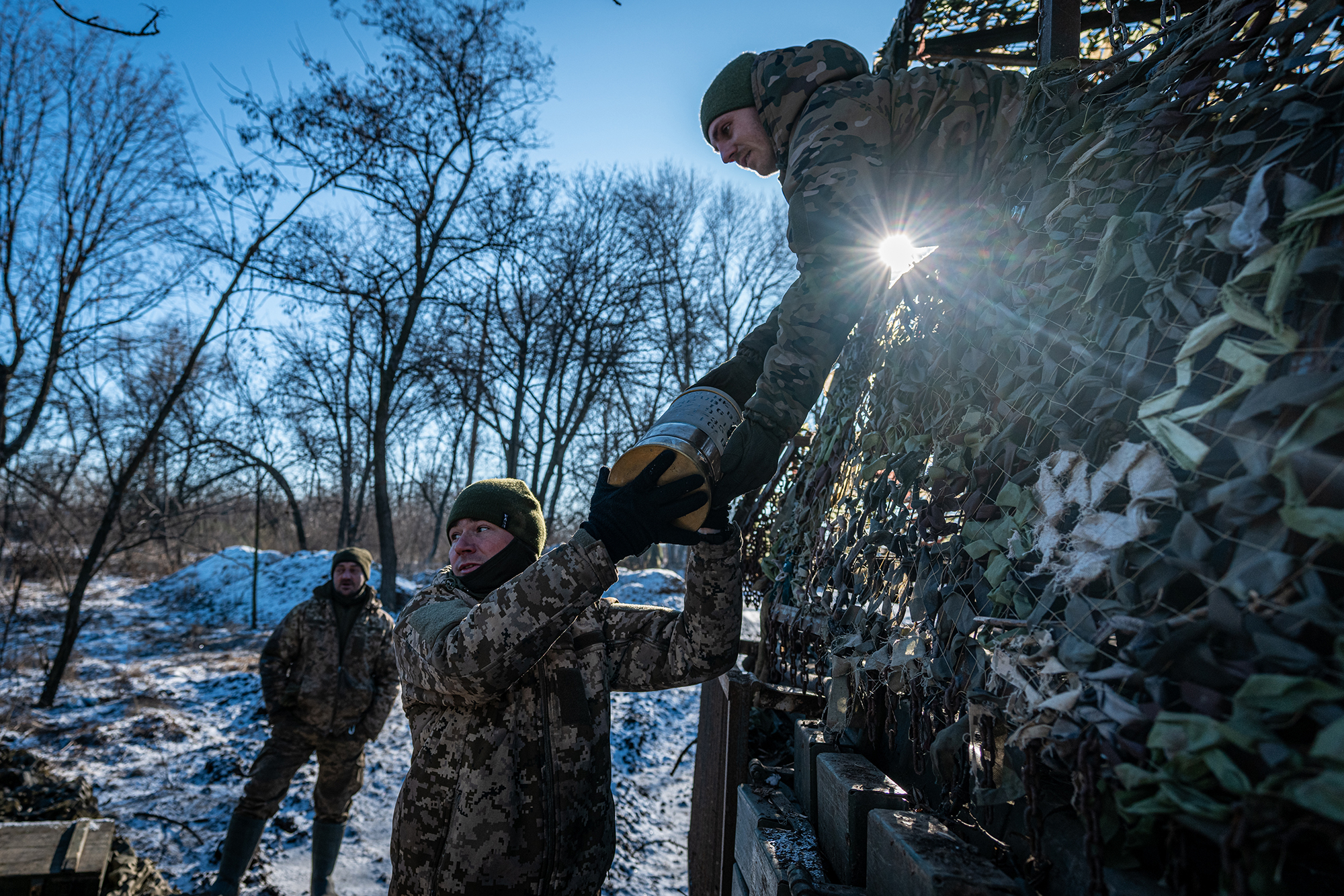
The war has transitioned to trenches in many ways due to ammunition shortages (Photo: Getty Images)
"The Defense Forces do not have a technological advantage. Moreover, the enemy quickly adapts to new challenges. Previously, we boasted about having more drone capabilities, but now they have caught up. Earlier, the enemy boasted about deploying powerful electronic warfare systems, now we are gradually addressing the imbalance. In terms of technology, we are roughly equal, so there is no 'wunderwaffe' that can radically change the situation on the battlefield. Only a combination of different types of weapons and technology will give us an advantage," explains Vladyslav Seleznov.
The respondents of RBC-Ukraine agree that delays and inadequate Western aid deliveries have become decisive factors. These delays have led to a gap in capabilities; for example, the U.S. has supplied only 31 Abrams tanks so far, while it is evident that in a year, a much larger portion of the 880,000-strong Ukrainian army could have been trained. The delays have also resulted in a sharp shortage of ammunition. Recent statements from the European Union underscore the inability to meet the goal of supplying one million artillery shells by March 2024.
"Of course, the military says that we can partially compensate for the shortage with FPV drones, but the combat components of a drone and a shell are not identical. And the combat tasks for artillerymen and FPV operators are usually different. Drones are more like precision tools, but miracles sometimes happen when we use them to destroy modern T-90 tanks. Shells are needed to destroy fortifications and equipment. Currently, the pace of artillery fire is lower than in 2022, but the 1:5 ratio is not in our favor and requires both increased production and more active assistance from allies," adds Seleznov.
Delays in aid play a critical role, according to Oleksandr Kovalenko. He states that without international support, Ukraine is limited not only in offensive but also in defensive actions.
"We have implemented an economy mode; we are saving ammunition quite harshly. Due to political battles with the U.S., new packages have not been coming for some time, there are financial problems from Europe, and Hungary is blocking assistance there. All of this undoubtedly affects our capabilities. Without international support, unfortunately, we cannot effectively defend ourselves, let alone go on the offensive," he noted in the comment.
It's worth noting that the prevailing opinion in the West is that Ukraine had everything necessary for a successful offensive in the summer of 2023 but fell short of the goal primarily due to the exhaustion of infantry forces. Vladyslav Seleznov believes this is not true, at least because the crucial component needed for success was missing.
"It's quite obvious: any military operation planned by NATO countries' armed forces presupposes absolute air superiority. How many units of Western-made aircraft have our partners transferred to us before the summer counteroffensive? Zero," he emphasizes.
In a new article for CNN, Zaluzhnyi places a special emphasis on unmanned weaponry.
"They are proliferating at a breathtaking pace and the scope of their applications grows ever wider. Crucially, it is these unmanned systems – such as drones – along with other types of advanced weapons, that provide the best way for Ukraine to avoid being drawn into a positional war, where we do not possess the advantage," notes the general.
He underscores that Russia's ability to deploy its military-industrial complex for attritional warfare and its advantages in mobilizing human resources indicate weaknesses in the production of ammunition in Ukraine. According to him, for the sake of victory, new ways and opportunities must be found that will provide an advantage. And priority number one is mastering the entire arsenal of unmanned and other technological means, which opens up the possibility of delivering sudden massive strikes without deploying expensive missiles or manned aircraft.
New strategy. What the Armed Forces of Ukraine need for breakthrough
One of the most influential experts in the United States, a senior fellow in the Russia and Eurasia Program at the Carnegie Endowment for International Peace, Michael Kofman, writes that after months of heavy fighting, the offensive in 2023 seems like a lost opportunity. The current situation is also not stable in the long term. Therefore, Ukraine and the West need a new strategic vision to have the opportunity, with the support of allies, to defeat Russia. Otherwise, if the support weakens, there is a high risk that Ukraine will be forced to negotiate from a position of weakness after exhaustion.
According to him, 2024 will determine the future trajectory of the war.
"If this year is used wisely, core problems are addressed, and the right lessons are applied from the 2023 offensive, Ukraine can take another shot at inflicting a major defeat on Russian forces. However, this demands a new strategy, premised on three central elements: hold, build, and strike," Kofman notes.
The actions of the Ukrainian government and the military align with his logic.
Element No. 1 - Hold
The Ukrainian strategy should start with this element to hedge against a Russian offensive in 2024. This includes the creation of deep-layered defense to facilitate the protection of almost a 1000-km front line. This would allow Ukraine to rotate forces and more effectively expend ammunition. Stronger fortifications, including underground bunkers and tunnels, would also offset Russia's advantage in artillery and precision bombs.
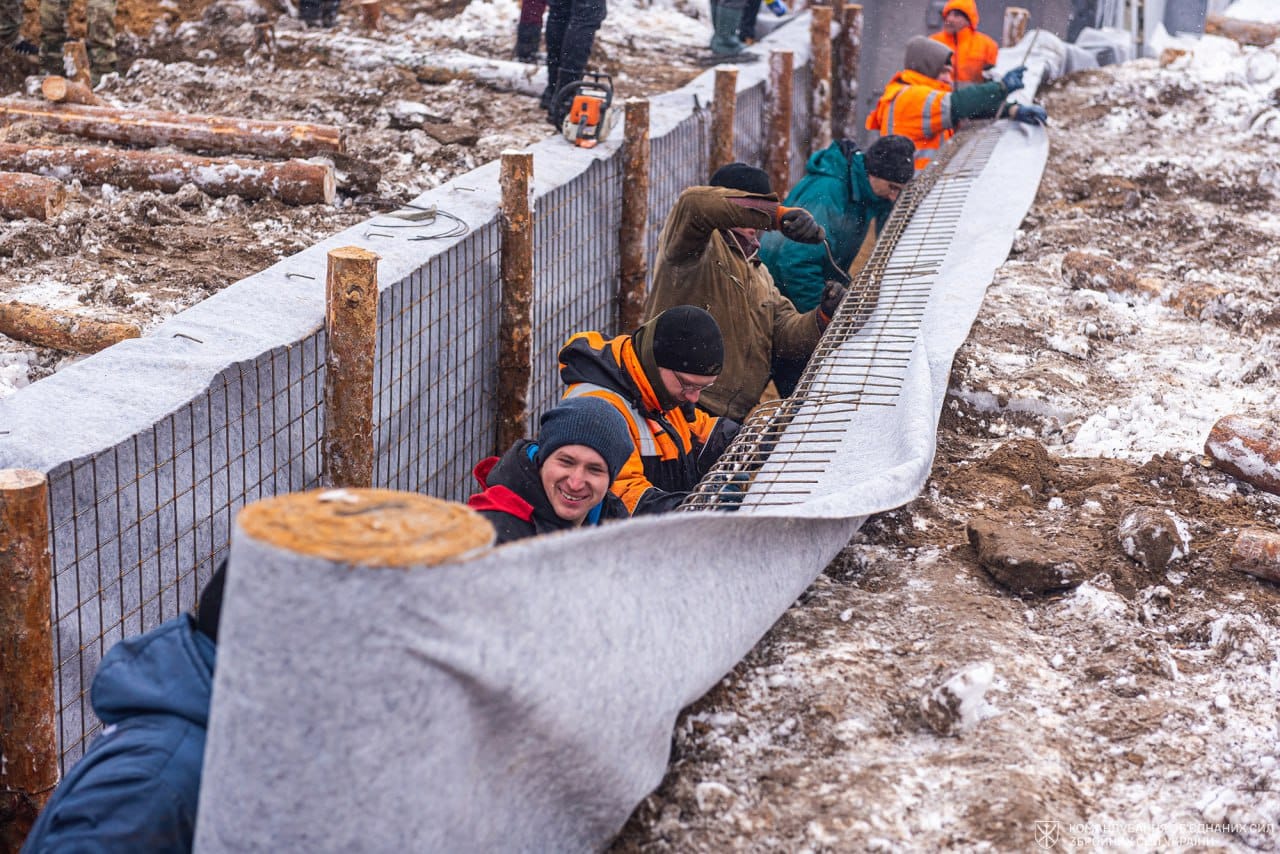
Construction of fortifications in northern Ukraine (Photo: facebook.com/JointForcesCommandAFU)
Recently, the spokesperson for the Ground Forces of the Armed Forces of Ukraine, Volodymyr Fityo, stated that fortifications are being built around the clock at all key points and on the northern borders. According to him, these are anti-tank ditches, engineering structures, and other defense lines. He also emphasized that the Defense Forces have prepared positions that would contain the enemy "just in case."
"The effectiveness of this tactic dates back to World War I. In fact, we see that even powerful high-tech weapons are not always able to break through engineering fortifications. The experience of the summer offensive confirmed this once again. Russian 'Surovikin's lines' held almost everywhere; only in some areas, we managed to break through the first line. We should do the same to restore resources, prepare new or restore existing assault brigades under their protection," Seleznov noted.
Element No. 2 – Build
Under this point, the creation of high-quality armed forces is understood. Kofman emphasizes the need to review mobilization policies and address issues related to the structure and quality of the Ukrainian Armed Forces. It is essential to consider not only the number of mobilized individuals but also their average age. The expert believes that conducting offensive operations becomes challenging when the average age of soldiers approaches 40, raising concerns about physical fitness and health.
Secondly, with the support of the West, training programs should be expanded. These programs should encompass not only tactical requirements for combat actions in Ukraine but also the ability to operate with units and the training of brigade personnel. According to him, commanders cannot be adequately trained in a short period, providing an additional argument for planning a strategic offensive in 2025.
It is worth noting that this week, the government submitted an updated draft law to the Parliament aimed at strengthening mobilization. Vladyslav Seleznov is cautious in his assessments and advises waiting for the decision of the Constitutional Court of Ukraine and legal experts on how well the proposed norms align with the Constitution.
"Only after that can we speak more specifically. The law cannot contradict the Constitution. Everything else can be coordinated through an effective communication campaign. Do we have positive examples now? I doubt it, especially when some speakers start talking about 'shot knees.' That's definitely not proper communication," he said, specifying that the issue of electronic notices raises concerns.
Element No. 3 – Strike
The active component of the strategy involves expanding the offensive campaign. Kofman writes that Ukraine is capable of gradually neutralizing Russia's military advantage by striking at bases in Crimea and near the borders. To achieve this, the West should help increase the production of long-range drones and reconsider the ban on missile strikes on Russian territory.
To weaken the enemy, strikes need to be directed at rear objects in Russia, shifting the war onto its territory. Ukraine needs missiles with a range of 300 km to destroy logistical centers. Ideally, they should explore the possibility of striking the military-industrial facilities in the Urals and beyond. Recent examples with the terminal in Ust-Luga (Leningrad region) and the refinery in Tuapse (Krasnodar Krai) confirm that our country's capabilities are growing.
However, this is not enough for a breakthrough on the front, says expert Oleksandr Kovalenko, as all weapons must be used comprehensively.
"We need more artillery to strike at 30 km, reveal defensive lines, and destroy enemy artillery. We need armored vehicles – light and medium-armored, tracked, and wheeled, depending on the terrain where offensive actions will take place. Tanks remain necessary for providing fire support to infantry," he said.
An especially crucial component is aviation. Regarding the promised multi-role F-16 fighters, the arrival of which is optimistically expected in the first quarter of 2024, only in December did the first group of pilots begin training in Denmark. The Minister of Defense of the Netherlands, Kajsa Ollongren, did not specify the delivery terms for the F-16s but expressed hope that they would arrive this year.
"The most important thing is to prevent the Russians from dominating the air. This can be achieved through air defense, long-range missiles, and aviation that launches these missiles. Another important component is drones, in some locations, they even play a decisive role. And reconnaissance information about the enemy's actions. All these means are needed comprehensively for a breakthrough," Kovalenko added.
***
In December, The Wall Street Journal published the opinions of Western diplomats and military strategists. They can be summarized as follows: a depleted Ukraine needs at least a year for recovery, and it is unlikely to launch a large-scale offensive before 2025.
Experts interviewed by RBC-Ukraine note that everything depends on resources and assistance. Roughly speaking, if tanks, missiles, and aircraft are available in the country tomorrow, perhaps there won't be a need to wait for the next year. However, if the current trend of zero deliveries persists, even 2025 may not be decisive.
"Although something unexpected may happen. For example, the Crimean Bridge may lose its functionality, disrupting enemy logistics to Crimea and the mainland south, making it difficult for Russians to defend. I wouldn't rule out that something favorable to our offensive actions might happen even in 2024," concluded Kovalenko.
Ahead of the second anniversary of the full-scale invasion, Valerii Zaluzhnyi believes that in 2024, all efforts should be focused on three directions: the establishment of a high-tech asset support system, the philosophy of warfare with limited resources, and the mastery of modern combat capabilities. According to him, the army needs a new system of rearmament, which, in his opinion, may take about five months to create.
